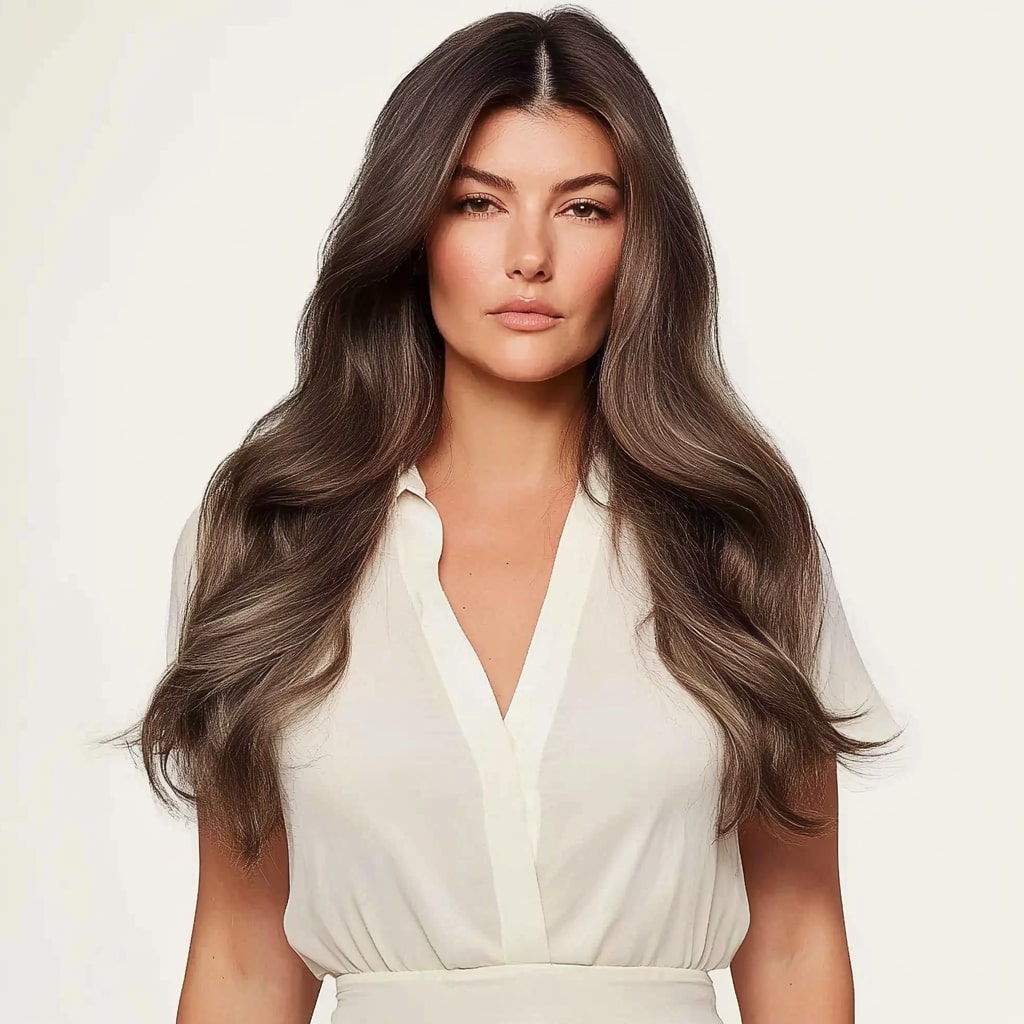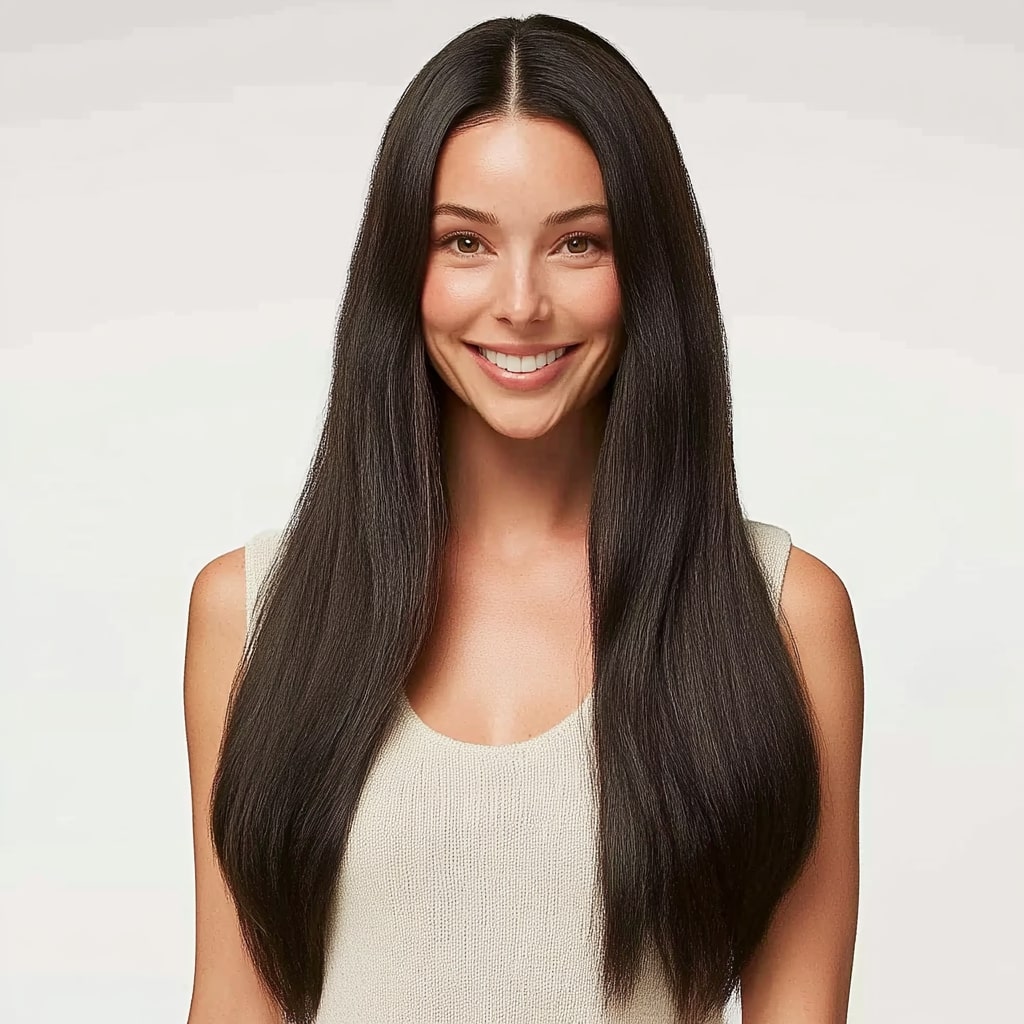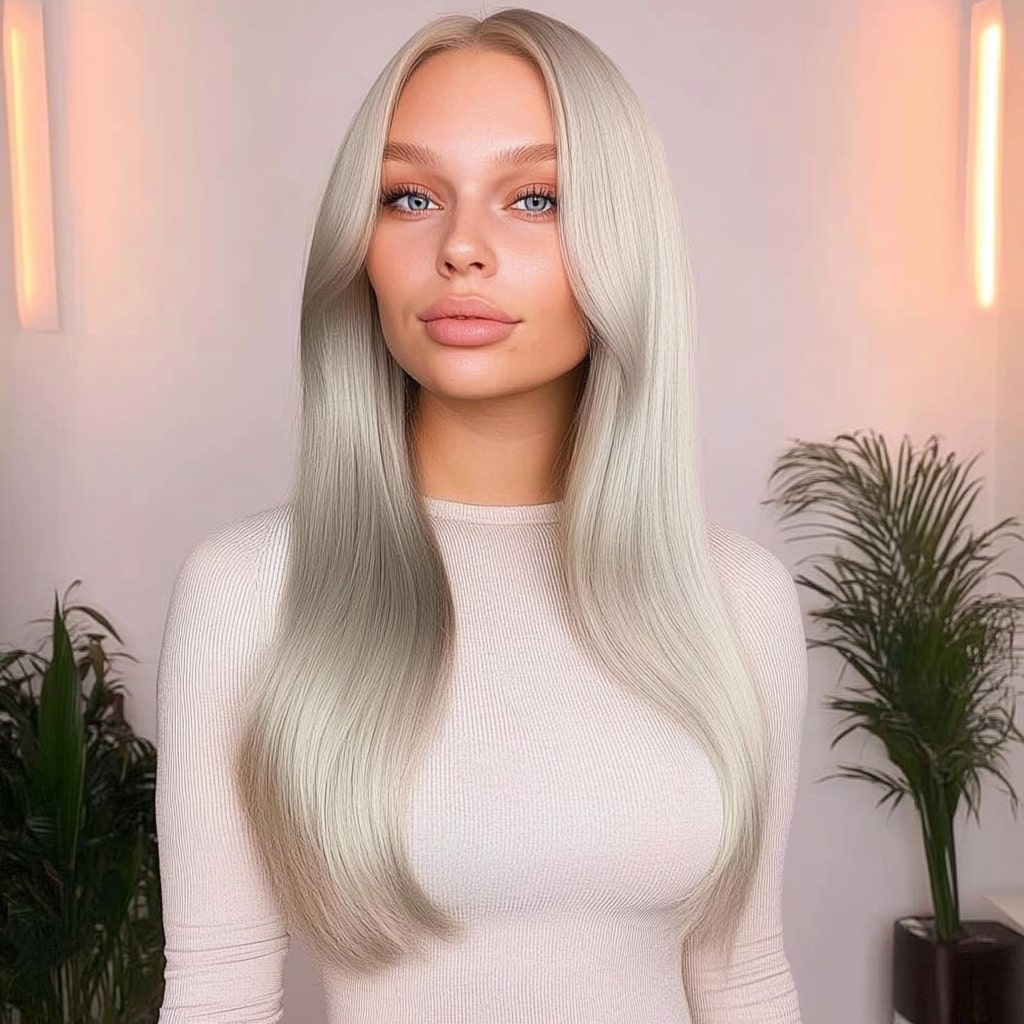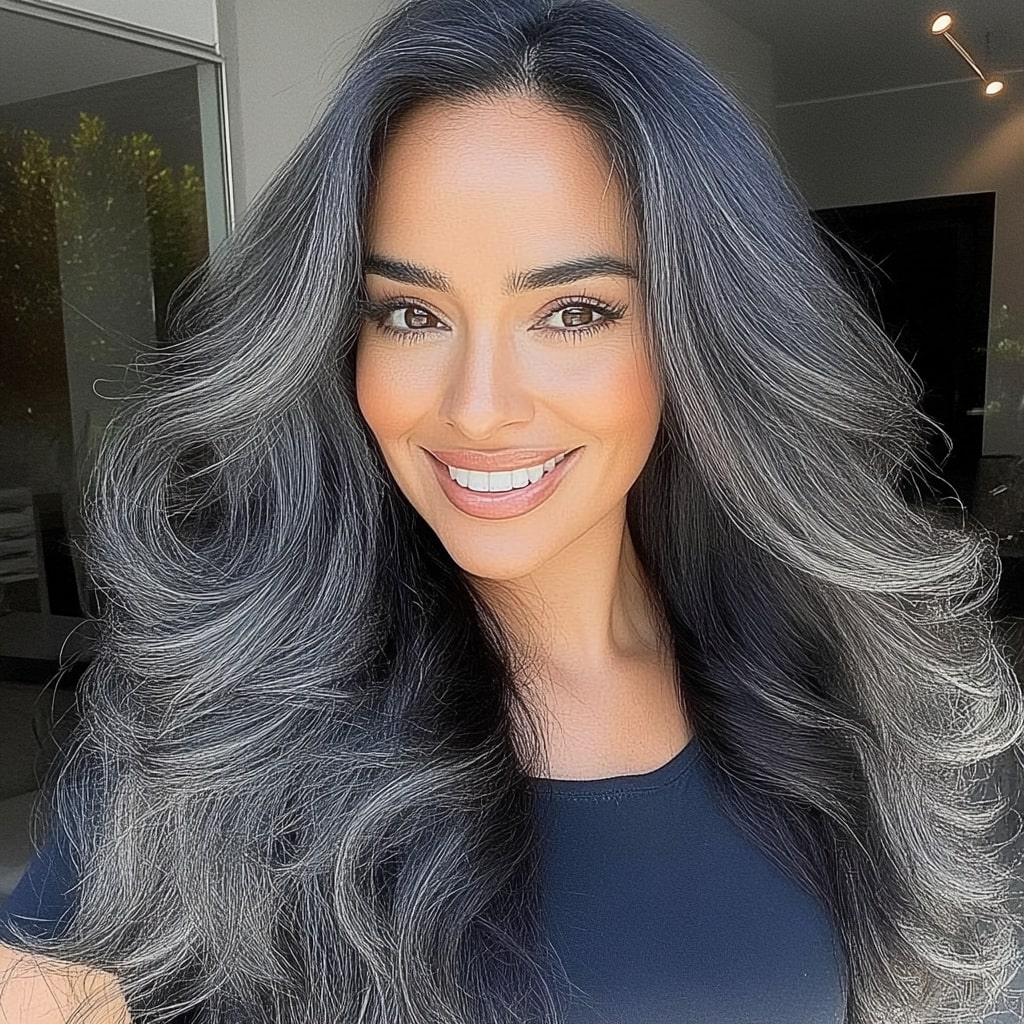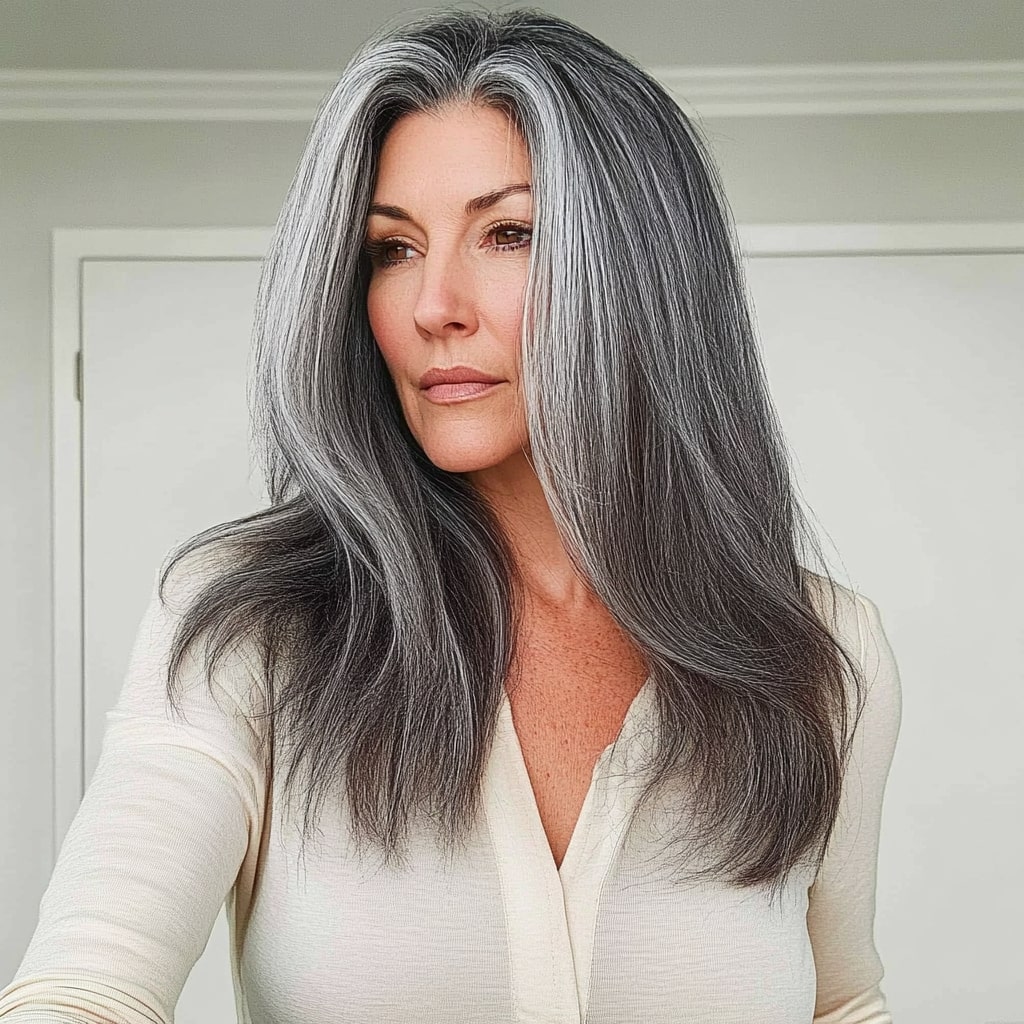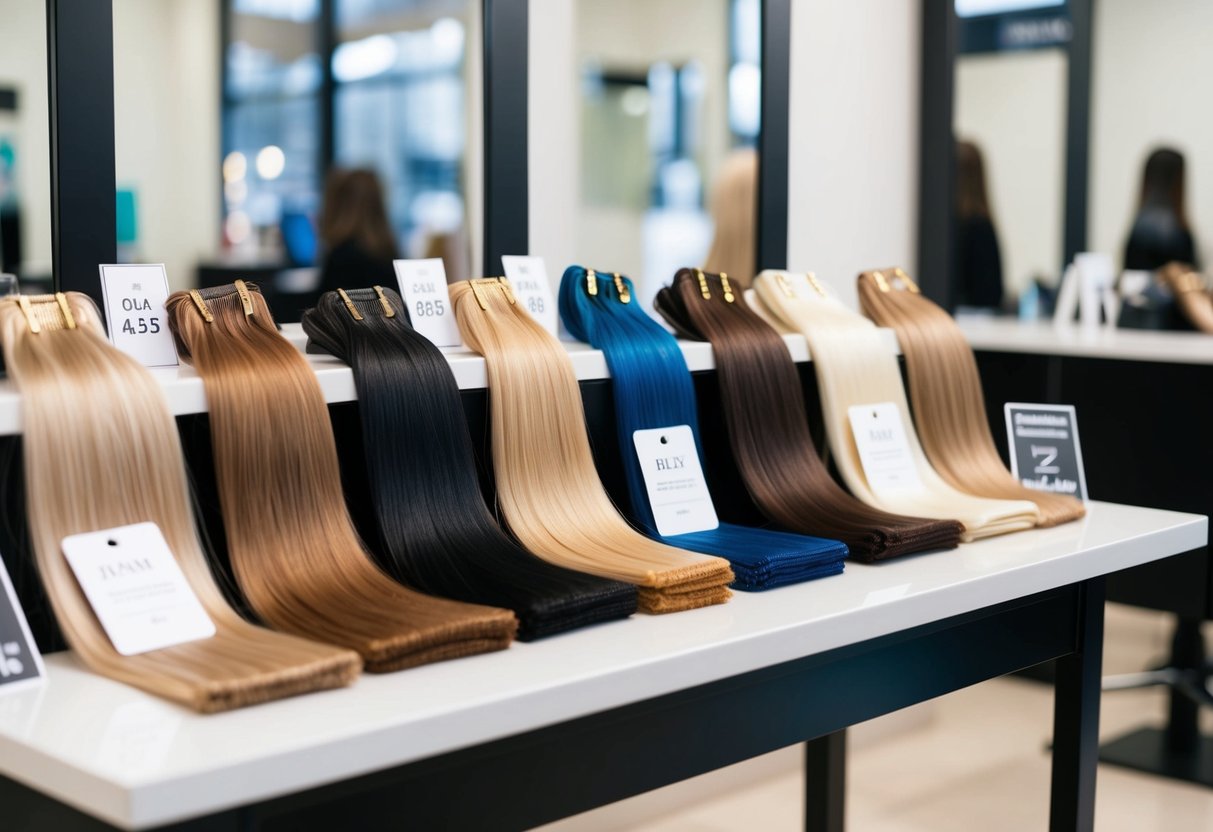Why Are My Hair Extensions Getting Shorter: A Comprehensive Analysis

You may have noticed your hair extensions appearing shorter over time. This is a common issue many experience with extensions. The primary reason for this shortening is natural shedding, as all hair, whether natural or extensions, sheds regularly. Additionally, daily activities and improper maintenance can contribute to this phenomenon.
Natural hair shedding, combined with the wear and tear from styling, washing, and environmental factors, often causes extensions to lose length. Furthermore, incorrect installation or handling can exacerbate this problem, leading to a noticeable reduction in the length of your extensions.
Addressing this issue involves understanding proper hair care practices and choosing the right products. By adopting a comprehensive care routine, you can minimize shedding and maintain the length and appearance of your hair extensions for a longer period.
Key Takeaways
- Natural shedding is a main cause of extensions getting shorter.
- Daily activities and improper maintenance can reduce length.
- Proper care and products can help maintain extension length.
Understanding Hair Extensions

Hair extensions can enhance your natural hair, adding length, volume, and style. To better understand hair extensions, it's important to know about the different types and methods of installation, the hair growth cycle, and how to determine the quality of extensions.
Types and Methods of Installation
There are several types of hair extensions, each using different methods of installation. Clip-in extensions are temporary and can be easily applied and removed. Tape-in extensions use adhesive strips and typically last 4-8 weeks. Fusion extensions involve fusing individual strands to your natural hair with a keratin bond and can last several months. Sewn-in extensions are sewn into braided hair and generally last 6-8 weeks. Each method offers unique benefits and can affect how long the extensions last and maintain their appearance.
Hair Growth Cycle and Extensions
Your natural hair growth cycle consists of three phases: anagen (growth), catagen (transition), and telogen (resting). Hair extensions, although not growing themselves, are attached to your natural hair, which continues to grow and shed. This natural shedding can cause the extensions to seem shorter over time. Understanding this cycle helps in maintaining your extensions, as regular maintenance is essential for prolonging their lifespan and keeping them looking natural.
Determining Quality of Hair Extensions
The quality of hair extensions can significantly impact their longevity and appearance. Remy hair is often considered the highest quality, as the cuticles are kept intact and aligned, reducing tangling and matting. Non-Remy hair, where cuticles are stripped or not aligned, tends to be less durable. Synthetic hair extensions are usually less expensive but may not blend seamlessly with natural hair. Human hair extensions provide a more natural look and feel. When choosing extensions, consider factors such as texture, color, and length to ensure they match your natural hair and meet your styling needs.
Choosing high-quality extensions, understanding the hair growth cycle, and being aware of the different installation methods are crucial for maintaining the length and beauty of your hair extensions. Regular care and proper maintenance will help you enjoy the benefits of hair extensions for a longer period.
Factors Leading to Shortening of Extensions
Several factors contribute to the shortening of hair extensions. These include physical stress and manipulation, heat and chemical damage, incorrect application and removal, and environmental factors.
Physical Stress and Manipulation
Hair extensions undergo significant physical stress from daily activities. Frequent brushing, washing, and styling can cause friction and breakage. This friction leads to the weakening of hair strands, resulting in split ends and shedding. Excessive shedding further shortens the extensions. It's essential to handle extensions gently, avoiding aggressive brushing or pulling.
Heat and Chemical Damage
Using heat-styling tools like flat irons, curling irons, and blow dryers can severely damage hair extensions. Heat damage weakens the hair shaft, causing breakage and split ends. Additionally, chemical treatments such as coloring or perming can strip the hair of moisture and strength. These factors cumulatively cause the extensions to shorten.
Incorrect Application and Removal
Improper application and removal of hair extensions can lead to significant damage. Using the wrong techniques or tools can cause tension, resulting in hair breakage and shedding. Ensuring that a professional handles the installation and removal of extensions can minimize these risks and maintain the length and health of the extensions.
Environmental Factors
Hair extensions are also affected by environmental factors. Exposure to chlorine, saltwater, and direct sunlight can weaken the hair fibers. UV rays and harsh chemicals can cause color fading and breakage. To protect your extensions, avoid prolonged exposure to these elements and use protective products like leave-in conditioners.
Maintaining Hair Extensions
Proper care and maintenance of hair extensions are essential to keep them looking great and to ensure their longevity. Key practices include gentle washing, adequate detangling, careful styling, and routine salon visits.
Washing and Conditioning Techniques
When washing your hair extensions, it is important to use gentle shampoos and conditioners. Harsh products can damage both your natural hair and extensions. Use sulfate-free shampoos to maintain moisture and avoid dryness.
Steps for Washing:
- Wet your hair with lukewarm water.
- Apply shampoo starting from the roots and work towards the tips.
- Rinse thoroughly and apply conditioner in the same manner.
To keep your extensions moisturized, use hair masks or treatments with natural oils like argan or coconut oil. Let your hair air-dry after washing to minimize heat damage.
Combing and Detangling
Detangling your hair extensions requires patience and the right tools. Use a wide-tooth comb or a brush specifically designed for extensions.
Detangling Process:
- Start by gently separating the hair with your fingers.
- Use the comb or brush from the tips, working upwards to the roots.
- Avoid pulling or tugging to prevent breakage and shedding.
If your extensions are prone to tangling, consider using a leave-in conditioner or detangling spray to make the process easier and to keep the hair smooth.
Appropriate Styling Practices
Styling can impact the lifespan of your hair extensions. Limit heat styling tools like flat irons and curling wands. If heat styling is necessary, always use a heat protectant spray to shield the hair from damage.
Styling Tips:
- Opt for low-heat settings on styling tools.
- Incorporate protective hairstyles such as braids or buns.
- Avoid tight hairstyles that place stress on your extensions and roots.
Experiment with heatless styling methods, such as overnight braids or rollers, to achieve curls or waves without damage.
Regular Salon Visits for Maintenance
Routine visits to your stylist are essential to keep your hair extensions in optimal condition. Schedule appointments every 6-8 weeks to have your extensions checked and adjusted.
During these visits, your stylist will:
- Lift and refit extensions as your natural hair grows.
- Trim any split ends to keep the extensions looking fresh.
- Apply treatments to maintain moisture and health.
Listen to the advice of your stylist regarding specific products and routines tailored to your hair type and extensions. Regular professional care can prevent issues and extend the life of your extensions.
Promoting Extension Longevity
To ensure your hair extensions last longer, you need to focus on overall hair health, choose high-quality products, and handle your extensions with care.
Nutritional Support for Hair Health
A balanced diet plays a crucial role in maintaining the health of your hair, including extensions. Consuming essential nutrients such as vitamins and minerals can help prevent hair loss and promote hair strength.
Include foods rich in vitamin E, iron, omega-3 fatty acids, and biotin. These nutrients support healthy hair follicles and reduce breakage.
Hydrating your body regularly by drinking water can also keep your hair moisturized from within. Consistency in maintaining a nutritious diet can significantly enhance the durability of your hair extensions.
Choosing High-Quality Extensions and Equipment
Selecting high-quality extensions is vital to their longevity. Look for extensions made from 100% human hair, as they tend to last longer and blend seamlessly with your natural hair.
Proper equipment also makes a difference. Use suitable bonding agents, clips, and sewing threads designed for hair extensions. Replacing worn-out tools can prevent damage during application or removal.
When purchasing hair extensions, check for brands that offer varied length options to match the extensions with your hair length, ensuring natural integration and reducing tension on your hair strands.
Proper Daily Handling
Gentle care is paramount in maintaining hair extensions. Avoid tugging or pulling on your extensions to prevent strain on both the extensions and your natural hair.
Regular trims can help keep your hair extensions looking fresh and reduce split ends. Use a wide-toothed comb or a brush specifically designed for extensions to detangle your hair.
When washing, use sulfate-free shampoos and conditioners to avoid stripping natural oils. Pat your hair dry instead of rubbing aggressively. Air drying is preferable, but if you must use heat, ensure it is on a low setting to avoid damage.
Adhering to these practices will help prolong the life and appearance of your hair extensions, ensuring they remain a valuable investment.
The Role of Hair Care and Grooming Tools
Using the right hair care and grooming tools is essential to maintaining the length and health of your hair extensions. Proper tools help prevent damage and minimize shedding.
Appropriate Use of Heat Styling Tools
Heat styling tools such as blow dryers, curling irons, and straighteners can cause significant damage to hair extensions if not used correctly. High heat can weaken hair bonds and lead to breakage.
It's crucial to use a heat protectant spray before applying any heat. This creates a barrier, reducing the risk of heat damage. When using tools, keep the temperature on a low to medium setting. Avoid holding the tool on one spot for too long to prevent scorching the hair.
Switching to ceramic or tourmaline tools can also minimize damage. These materials distribute heat more evenly, reducing the risk of hot spots. Regularly cleaning your heat styling tools can also prevent burnt residue from transferring to your extensions.
Selecting the Right Brushes and Combs
Choosing the appropriate brushes and combs is vital for maintaining the length and health of your hair extensions. Brushes with boar bristles or nylon bristles are gentle on the hair and help distribute natural oils, maintaining moisture levels.
Wide-tooth combs are ideal for detangling wet hair, reducing the risk of pulling and breaking extensions. It's important to start combing from the ends and work your way up to the roots to avoid tugging at the extensions.
Avoid using brushes designed for natural hair on your extensions, as they might be too harsh. Specialized extension brushes are designed to glide smoothly without causing damage. Regular cleaning of your brushes and combs is also essential to prevent buildup that can transfer to your hair.
Customizing Hair Extension Care by Hair Type

Caring for hair extensions properly requires tailoring your routine to your hair type. Different hair textures and colors need different kinds of care to keep the extensions in optimum condition.
Care for Different Hair Textures
Fine Hair: Be gentle when styling fine hair extensions to avoid breakage. Use a soft-bristle brush and avoid tight hairstyles that may pull on the roots. Opt for lightweight products that don't weigh the hair down.
Thick Hair: For thick hair extensions, you need more rigorous care to prevent tangling. Use a wide-tooth comb and a hydrating conditioner to keep the hair smooth. Section the hair when detangling to make the process easier.
Dry Hair: If your extensions have a dry texture, consider using deep conditioning treatments frequently. Avoid excessive heat styling, and always apply a heat protectant. Sleeping on a silk pillowcase can reduce friction and breakage.
Managing Colored and Treated Extensions
Colored Hair: Extensions that have been dyed require special attention to maintain their hue. Use color-safe shampoos and conditioners to prevent fading. Avoid chlorine and saltwater, as these can strip color. Limit sun exposure to protect the color.
Heat-Treated Hair: Extensions that have been heat-styled or chemically treated can be prone to damage. Always use a heat protectant before styling and opt for lower heat settings. Regularly apply hair masks to restore moisture and keep the hair healthy.
By customizing your care routine based on your hair type and treatment, you can extend the lifespan of your hair extensions and keep them looking their best.
Final Considerations for Extension Care
Proper care of hair extensions is essential to protect your investment and maintain a natural appearance. Neglecting care routines can lead to extensions getting shorter and appearing thin.
Natural Shedding: Like your own hair, extensions shed. Shedding can contribute to shorter extensions. Regular gentle brushing can help manage this shedding.
Washing and Conditioning: Use sulfate-free shampoos and conditioners. Sulfates can strip away natural oils, causing dryness and breakage. Air-drying your hair will minimize stress on the roots and prevent damage.
Styling Tools: Limit the use of heated styling tools. If you must use them, apply a heat protectant first. Excessive heat can weaken the bonds of your extensions.
Protection from Elements: Avoid excessive exposure to chlorine, saltwater, and direct sunlight. These elements can damage and fade your extensions. Wear a protective cap when swimming.
Night Care: Never sleep with wet extensions. Always put your hair into a loose ponytail or braid before bed. This reduces tangling and pulling on your extensions, which can lead to shedding or breakage.
Following these tips will help maintain your extensions, ensuring they stay lush and vibrant, contributing to a fuller appearance and better hair growth environment.
Frequently Asked Questions
Hair extensions can change in appearance and condition over time. Understanding the causes and best care practices can help you maintain their length and look.
What causes hair extensions to appear shorter over time?
Hair extensions can look shorter because of natural shedding, breakage, and incorrect care. Extensions that are too heavy for your natural hair may cause pulling, leading to breakage and a shorter appearance.
How can I prevent my hair extensions from drying and becoming frizzled?
To keep hair extensions from drying out, use moisturizing shampoos and conditioners. Avoid using heat styling tools too frequently, as they can cause damage. Regularly apply deep conditioning treatments designed for hair extensions.
What indications suggest that hair extensions are of poor quality?
Poor quality hair extensions may tangle easily, shed excessively, and lose their shine quickly. They might also feel rough or synthetic compared to human hair extensions.
What is the recommended frequency for washing human hair extensions?
Wash human hair extensions every 1-2 weeks, depending on your lifestyle and hair type. Use gentle, sulfate-free shampoos and conditioners to keep them looking their best. Always follow the care instructions provided by your stylist or the extension manufacturer.
How should I care for my hair to prevent thinning after using extensions?
To prevent thinning, avoid tight hairstyles that pull on your natural hair. Be gentle when brushing and styling. Consider taking breaks between extensions to allow your natural hair to recover and strengthen.
What are the best practices for maintaining the length of hair extensions?
Regularly trim the ends to prevent split ends. Brush your extensions gently with a wide-tooth comb or a brush designed for extensions. Store clip-in extensions properly when not in use to avoid tangling and damage.

 My Store Credit
My Store Credit
 Buy Again
Buy Again
